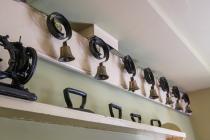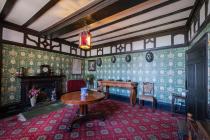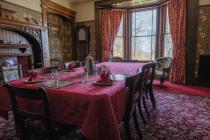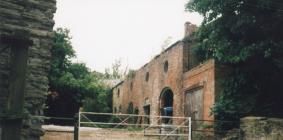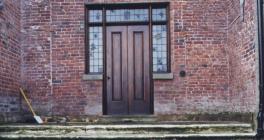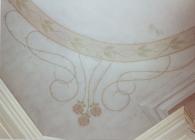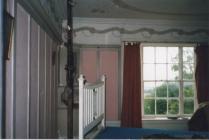Stokyn Hall
Stokyn Hall Farm is one of the most original Edwardian Houses in Flintshire, and is a Grade 2* listed building, having been in the family for over a hundred years. Set in its own grounds, close to the NW boundary of the Community Council area. Reached from the main coast road (A 548) along an unmade lane for 1km.
This house dates back about 1650 and is mentioned in the books 'Tours of Wales' by Thomas Pennant. During the early nineteenth century significant changes were carried out by the Roskell family, who's personal wealth came from the local smelting works, George Roskell became the first Lord Mayor of Flint.
Late C17/early C18 origins to this building although Stokyn is recorded since C15 and was once in Mostyn family ownership. Altered at end of C18 - referred to in 1796 by Thomas Pennant as a "small house" and much improved....of late years". Greatly enlarged in mid C19 (shown at present size on 1871 map) and remodelled, especially the interior, ca 1900 for a Liverpool timber merchant; this latter work is said to be to the designs of Waring and Gillow of London and Lancaster who were chiefly known as furniture makers - the renowned firm of Gillow (founded C18) amalgamated with that of Waring before 1900.
2-storeys and attic. Tiled roof to front with cresting and slate roofs to rear; cement rendered and red brick chimney stacks. 3-bay main (NE) front with gabled end bays projecting to contain central porch with Gothic arches. Pebbledash ground and 1st floors, with quoins; cement render gables with applied half-timbering around 6-pane sash windows. Large tripartite small-pane sash windows to 1st floor; splayed freestone bays to ground floor with marginal glazing bars to sashes. 1-window left (SE) end with similar treatment; at right end is partly C19 rubble range (servants quarters?) set back - very poor condition at time of inspection (June 1990); small-pane sashes to rear. The 2-cross ranges to SE at rear are of C17 and C18 origin, the lower part being rubble with peeling render; above the end range has older brickwork; camber headed 16 and 20-pane sashes. Sliding sashes and boarded doors to centre rear. Cross range at left end has broad chimney breast with 3 red brick stacks over toothed cornice. Attached is a single-storey rubble and slate roof outbuilding including projecting larder, with horizontally sliding sash, at corner and low camber headed doorway beside. This range then turns at right angles parallel to rear of the house to close the narrow yard; leaded light windows. Mid C19 stable block to W with pitching eyes.
The main entrance is onto a hall with broad dog-leg stairs. Coloured glass with armorial panels; panelled shutters, doors and reveals. The public rooms leading off that, as well as the main 1st floor rooms, are said to have been designed by Waring and Gallow - the conclusion, therefore, is that they also designed some of the furnishings. If all these rooms are contemporary and by the same firm, they are unusually varied. One room, possibly library, has fine chimney-piece with carved and garlanded heads with smiling and frowning expressions; enriched surrounds to flanking recesses. Another room has well ceiling with moulded cornices. On other side of hall is a square room with applied timber frieze in Gothic manner; this leads into far drawing room which has light Regency ornamented ceiling and chimney-piece. The kitchen has central cross beam with diagonal chamfer stops. 1st floor retains fine main bedroom.
Graded II* for the special interest of the interior design which is an unusual example of the work of Waring and Gillow.
References: T Pennant, "The History of the Parishes of Whitford and Holywell”, first published 1796 - facsimile edition 1988.
1st edition Ordinance Survey map, sheet V1.9, dated 1871.
Information from the owner, Llinos Penman.
Since then, the house has been renovated, as the photographs show. It is now a bed and breakfast establishment, though it still retains many of the original features. Llinos quotes “The original Victorian kitchen still has the servants' bells and two house keepers cupboards, the table itself was so big; when the house was being renovated, it was one of the only pieces of furniture that didn't leave the house as it was to wide for all the doors!”




